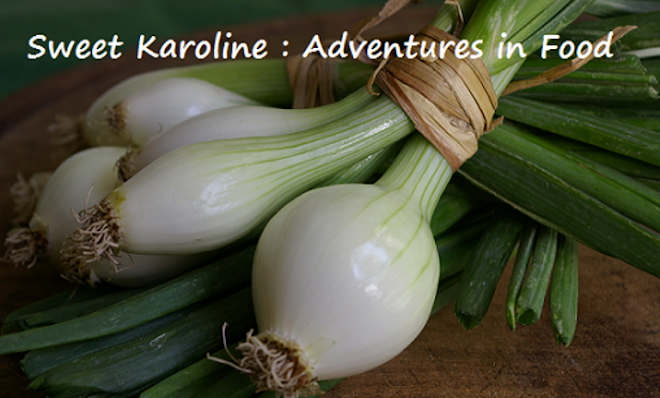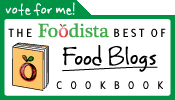Saturday, January 2, 2010
Proof that we are on the right track
My mom sent me this article a little while back...British researchers did a study suggesting that the consumption of processed foods leads to increased risk of depression. So, have a HAPPY 2010, and leave the processed foods in the past!
Friday, January 1, 2010
An Inspiration, Not an Exact Definition

Since it is actually January 1st – how the hell did that happen? – we have been forced to solidify our guidelines for 2010. There is much debate over terms such as “processed,” “natural,” “organic,” “wholesome,” etc. In this post, we are not attempting to universally define these words. What we sought were working parameters for our diet in the year 2010 and hopefully beyond. Our resources are not unlimited, and neither is our time – and we understand that our readers are limited by similar constraints. The goals of this project are to have fun, be healthy, and open both your minds and ours to a new way of thinking about nourishing our bodies. So, while you may define processing of food as shipping, washing, handling etc, we have not taken our ideas to such an extreme. We know that you might argue that items such as milled flour should not be a part of our “unprocessed” diet, but our intent is to keep the project accessible to everyone. If our guidelines and recipes are so far detached from mainstream American life, and our readers are therefore not inspired to replicate them at home, we have lost sight of the main goal.
We will, of course, be eating a form of processed foods. If I brine a batch of pickles, I have indeed processed the cucumbers. However, I have taken control of where my food came from and what went into it. I control the process. I know what I am eating.
In addition, we have only partially –not completely – lost our minds. We do reside in one of the best “food cities” in America. To suggest that we will not eat in a restaurant for the duration of 2010, is insane. So, we have built in an exception to the rules. Each week, we will permit ourselves one meal consumed in a restaurant. When we dine out, we will, however, choose items that we believe fit best within our parameters.
Goals:
-Have fun!
-Challenge ourselves to think outside the proverbial box
-Teach friends and family how to make simple changes that benefit their health
-Lose weight
-Be properly nourished
-Maintain healthy blood sugar, cholesterol, and blood pressure levels
-Prevent cardiovascular disease and diabetes
Not Allowed:
-commercially canned food
-boxed food
-commercially frozen food (although exceptions may be made for peas, lima beans, and soy beans)
-commercially produced condiments such as: ketchup, soy sauce, mustard, mayo, etc
-anything containing HFCS or just plain old corn syrup
-hydrogenated or trans fats
-anything with preservatives or additives (especially those that cannot be pronounced by a lay person)
-anything prepared outside of the home including (but not limited to): bread, cookies, chips, pasta, soup, candy, crackers, juice, pickles
-fast food
-soda and other bottled non-alcoholic beverages
-industrial cheeses such as cream cheese, kraft etc
-commercially ground meat
-commercially smoked or cured fish and meat -- including deli meats
-anything containing nitrates
-commercially cultured non-cheese dairy products such as: yogurt, sour cream etc
-pre-portioned and shrink wrapped meat (we will purchase larger cuts and trim/portion them ourselves)
-spice mixes such as chili powder, curry powder, etc
-artificial sweeteners
To Be Used With Discretion:
-processed and refined sugars (other than honey and maple syrup which we have deemed “in” for now)
-white flour, corn flour and/or starch, rice flour
Seemingly Questionable But Still Allowed (At Least For Now):
-chocolate
-beer (is homebrew in our future?)
-wine
-liquor
-vinegar (until we can find a mother and cultivate it)
-plain olive oil and canola oil
-unflavored sparkling water (although we plan to purchase the machine which carbonates tap water)
-coffee & tea
What We Will Try To Eat More of:
-whole grain and whole grain meals
-fresh fruits and veggies
-whole fish or large sides
-sustainable shellfish (in the shell, whole)
-home-fermented foods high in pro-biotics such as pickles and yogurts
-whole birds
-buffalo or grass-fed meat (as opposed to corn fed beef or pork)
-foraged, local foods
Finally, we knew the January 1st deadline was coming. Yet, we didn’t anticipate just how quickly it would sneak up on us. What we have listed here is a beginning. As the year evolves, our guidelines will too. We hope that we have piqued your interest, and we look forward to hearing your opinions and thoughts on our project, our recipes, and how to make this blog a better resource for your health.
Until next time, Bon Appetit.
Pictured above is our lunch of Dungeness crabs (rated Best Choice by the Monterey Bay Aquarium) hosted by Ben's boss on a houseboat in Saulsalito -- one heck of a way to welcome the new year!
Tuesday, December 29, 2009
Cured/ Smoked Salmon - Part 1 of 2

Given that I have eaten nothing but smoked salmon sandwiches for breakfast for the past 3 months, there is a strong possibility that without it, I will cease to survive. So, it is with serious desire to avoid an untimely death before I even make it to the dreaded 3-0 that I embark on this two-stage process of curing and then smoking a side of salmon. The neufchatel that I typically schmear on my homemade whole-wheat sourdough will be sorely missed in 2010, but alas, I don't have the skill set to take on that beastly burden -- not yet anyways.
Curing a whole side of salmon is actually quite easy -- assuming you have the financial wherewithal to drop $60 at the rip-off that is your neighborhood foodie haven. Begin by cleaning the fish and scoring the skin side so that it does not curl up and the salt has a chance to fully penetrate the flesh. Liberally cover the salmon, top and bottom, with the cure as well as dill for flavor, and wait several days. At this point, the fish will be delicious but void of its signature smoky flavor. Slice some off for nibbling and then proceed to the smoking process -- to be described in detail in the coming week.
Makes 1 full side of salmon
4 cups sea salt or kosher salt
1 cup brown sugar
1 cup white sugar
1 side of salmon, about 4 pounds
1 bunch dill, washed and well dried
black pepper, to taste
1. In a large bowl, stir together salt, brown sugar, and white sugar.
2. Remove all of the pin bones from the fish. This is most easily accomplished by running your index finger down the center of the fillet until you feel something hard and pointy. Using needle-nose pliers, carefully extract each bone.
3. Using a sharp boning knife, remove any visible white membranes from the surface.
4. Score the skin side of the fish deeply enough to penetrate the skin but not the flesh. Do this in 3 long diagonal strokes.
5. Place a wire rack on a baking sheet. Place a piece of cheesecloth large enough to fully envelope the fish on the rack.
6. Sprinkle a thick layer of the salt/sugar mixture onto the cheesecloth. Lay several sprigs of dill on top of the cure.
7. Lay the fish, skin side down, on top of the dill.
8. Season the flesh liberally with black pepper. Place the remaining sprigs of dill on the flesh.
9. Cover the top and sides of the salmon with the remaining cure. Make sure that you cannot see any of the flesh poking out of the cure.
10. Pull the cheesecloth up and over the top, covering the entire fish.
11. Place a baking sheet on top of the fish and weigh it down with a heavy pot.
12. Place the entire apparatus in the refrigerator for 3 days.
To be continued...
Tweet, Tweet

With the January 1st start date looming, I finally succumbed to the madness that is Twitter! You can follow me there @kboehmgoodnick
Here's to using technology to share my love for food in 2010, not to create the food I eat!
(Instead of their dove-like logo, I chose to supplement this mini-post with a photo of the truffle-studded, roasted capon -- aka "nutless" rooster -- that we served on Christmas day.)
Monday, December 28, 2009
Winter Squash Soup

These days, it seems that I just can't stay out of my own kitchen -- something that I attribute to the fact that for the first time in 10 years, I do not have an insanely high-stress job which requires me to slave away in someone else's kitchen for 80-plus hours a week. When I saw this squash at the market, the beauty in its gnarled ugliness was irresistable. At first, I couldn't bring myself to hack into it, but today, it practically begged me to turn it into soup.
I chose a turk's turban, but you can use any winter squash of a similar size. Sprinkling the onions with salt brings out moisture and allows them to cook without burning. Add a couple of pears to the mix to sweeten things up. To make the soup vegetarian, simply substitute water for the chicken stock -- although, I prefer the taste of a velvety stock. If you do not have a fine mesh sieve, don't fret; just be sure to blend the soup long enough to remove any lumps.
Take advantage of the last few days of Christmas lights, warm a crusty loaf, pour a glass of hearty red wine, and enjoy.
Serves 6
1 winter squash (about 4 pounds)
3 tablespoons olive oil
2 yellow onions, thinly sliced
salt, to taste
1 cup white wine
2 pears, peeled, cored and roughly chopped
5 1/2 cups chicken stock
pinch cayenne pepper
pinch ground nutmeg
1/4 cup plain yogurt
1 tablespoon sherry
1 bunch chives, finely chopped
1. Set the oven at 350 degrees.
2. Roast the entire squash on a baking sheet for 1 1/2 hours or until the squash is tender throughout.
3. Cut the squash in quarters. With a spoon, remove and discard the seeds. Scrape out and set aside the pulp.
4. In a large stock pot, heat 3 tablespoons olive oil over high heat. Add the onions to the pot and sprinkle them with salt; stir well. Sauté for 5-10 minutes or until the onions are tender and have begun to color, stirring occasionally.
5. Deglaze the pot with 1 cup white wine. Bring the liquid to a boil, and reduce it by 2/3.
6. Add chicken stock, pear, and cooked squash. Stir. Bring to a boil. Reduce to a simmer, and cook for 30 minutes. Stir frequently to avoid burning the bottom.
7. Season with cayenne, nutmeg, and sherry. Stir in yogurt.
8. Working in small batches, puree the soup in a blender or a food processor.
9. Pass the soup through a fine mesh sieve. Re-warm the soup if necessary.
10. Garnish each bowl with chives.
Subscribe to:
Comments (Atom)







